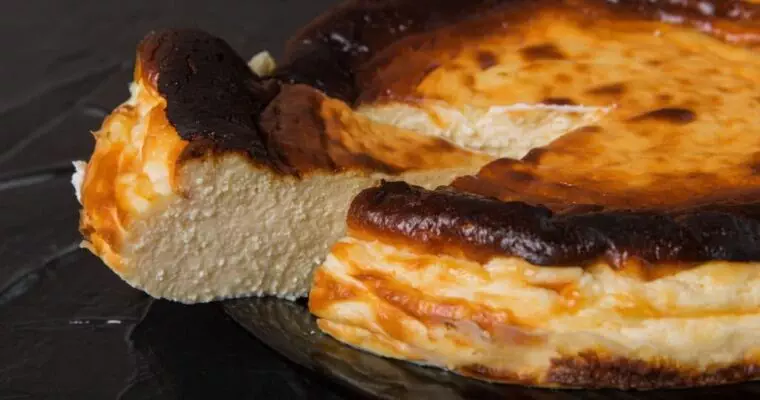Marzipan is one of Spain’s most iconic and delicious treats, especially around Christmastime. Its sweet almond flavor and soft, chewy texture make it a beloved dessert for many. Spanish marzipan, especially from Toledo, has a long history and is known for its artisanal production. In this article, we’ll explore everything you need to know about Spanish marzipan, from its origins to a step-by-step guide on how to make it yourself at home.
Table of Contents
The Origin of Spanish Marzipan: A Toledo Tradition
Spain is the world’s largest producer of marzipan, with Toledo being the center of this cherished tradition. In Toledo, marzipan is more than just a sweet treat, it symbolizes cultural harmony, representing the centuries-old coexistence of Arabs, Jews, and Christians in the city. There’s even a marzipan museum in Toledo, dedicated to the history and significance of this unique confection.
Traditionally, marzipan is made by grinding raw almonds and sugar in equal parts. The mixture is then rolled and shaped into figures before lightly baking until the tops turn golden. This method, passed down through generations, has been a staple of Spanish Christmases for centuries.
Key Ingredients for Traditional Marzipan
To create authentic Spanish marzipan, you need only a few simple ingredients, but they must be of the highest quality:
- Almonds: Raw, blanched almonds are the foundation of marzipan. Spanish marzipan traditionally uses Mediterranean almonds for their superior flavor and texture.
- Sugar: Granulated sugar is essential for sweetness and binding. Powdered sugar is optional.
- Egg Whites (optional): Used to help bind the marzipan mixture, though not always necessary.
- Lemon Zest or Almond Extract (optional): To enhance the flavor.
How to Make Authentic Spanish Marzipan (Step-by-Step)
Making Spanish marzipan is surprisingly simple, but it requires attention to detail. Follow these steps to create the perfect batch of this delicious treat:
Step 1: Blanch and Grind the Almonds
Start by blanching the almonds to remove the skins. After drying, grind the almonds into a fine meal using a food processor. Be careful not to over-process, if you don’t want to turn the almonds into almond butter.
Step 2: Mix with Sugar
Combine the almond meal with an equal amount of sugar. Blend until the mixture becomes smooth and pliable.
Step 3: Add Flavoring
You can add a hint of lemon zest or almond extract if you prefer a more pronounced flavor. This step is optional, enhancing the traditional taste of Spanish marzipan.
Step 4: Shape the Marzipan
Once the mixture is well combined, start shaping it into small figures or rolls. Popular shapes include animals, fruits, and geometric designs.
Step 5: Bake Lightly
Place the shaped marzipan on a baking sheet and bake at a low temperature (around 160°C / 320°F) for just a few minutes. You’re not looking for a full bake—only enough to lightly brown the tops.
Tips for Shaping and Baking Marzipan
- Get Creative: Traditionally, marzipan is shaped into small figures that resemble animals or fruits, but you can get as creative as you like. Try molding it into holiday-themed shapes like stars or bells.
- Don’t Overbake: One of the most common mistakes when making marzipan is overbaking it. You only want the top to brown slightly, so keep a close eye on the oven.
- Storage: Keep marzipan in an airtight container to preserve its moisture. Stored this way, it can last for several weeks.
The History and Cultural Significance of Marzipan in Spain
The cultural roots of marzipan in Spain run deep, particularly in Toledo. This city has been producing marzipan for centuries, and its association with religious and cultural harmony between Arabs, Jews, and Christians adds a fascinating layer of history to this simple confection. Marzipan is often featured in Spanish Christmas celebrations, and its significance extends beyond just a delicious treat—it’s a symbol of peace and coexistence.
Delicious Variations and Tips for Enjoying Marzipan
While the traditional version of marzipan is always a hit, there are several variations you can explore to add a new twist to the classic recipe:
- Chocolate-Dipped Marzipan: Dip marzipan shapes in melted dark chocolate for a better taste. The sweetness of the marzipan pairs beautifully with the bitterness of the chocolate.
- Pine Nut Marzipan: In some regions of Spain, marzipan is made with pine nuts instead of almonds. This variation offers a more delicate flavor.
- Marzipan with Fruit Fillings: Some people add a small amount of fruit jam or candied fruit to the center of their marzipan figures for a surprising flavor.
FAQs About Spanish Marzipan
- What is marzipan made of?
Marzipan is typically made of almonds and sugar, with some recipes adding egg whites or flavorings like almond extract or lemon zest. - How is Spanish marzipan different from other types?
Spanish marzipan is known for its simple recipe and focus on almond flavor. Other versions, like German or Italian marzipan, often include additional ingredients like rose water or higher sugar content. - Can I make marzipan without almonds?
Marzipan is traditionally made with almonds, but some variations use pine nuts or cashews. However, the flavor will change. - How long does homemade marzipan last?
Stored properly in an airtight container, homemade marzipan can last up to a month. - Can marzipan be frozen?
Yes, marzipan freezes well. Just wrap it tightly in plastic wrap before freezing, and thaw it in the refrigerator before use.
Other Spanish Christmas Recipes to Try
If you’re looking for other festive treats to complement your marzipan, consider trying these classic Spanish Christmas recipes:
- Turrón: A nougat-like candy made from almonds, honey, and sugar. It’s a must-have during the holidays in Spain.
- Polvorones: These almond shortbread cookies are known for their crumbly texture and melt-in-your-mouth sweetness.
- Roscón de Reyes: This traditional cake, typically eaten on January 6th for the Feast of the Three Kings, is filled with cream and candied fruits.
- Pestiños: Sweet dough fritters flavored with sesame and anise, often enjoyed with a drizzle of honey.
- Mantecados: Soft, crumbly cookies made with lard. Perfect for enjoying with a cup of coffee or hot chocolate.
Conclusion
Spanish marzipan is more than just a sweet treat, it’s a symbol of tradition, culture, and history, particularly in Toledo, where it has been produced for centuries. The simplicity of its ingredients combined with the artistry of its shaping and baking make marzipan a beloved part of Spanish Christmas celebrations. Whether following the traditional recipe or experimenting with delicious variations, making marzipan at home is a rewarding way to connect with Spain’s rich culinary heritage.

Spanish Marzipan Recipe: 3 Essential Tips to Perfect it at Home
Ingredients
- 250 g Sugar
- 250 g Ground almonds (marcona if available)
- 1 Egg white
- 1 Egg yolk (optional, for brushing)
- Lemon Zest or Almond Extract (optional): To enhance the flavor.
Instructions
- Blanch and Grind the AlmondsStart by blanching the almonds to remove the skins. After drying, grind the almonds into a fine meal using a food processor. Be careful not to over-process, as you don’t want to turn the almonds into almond butter.
- Mix with SugarCombine the almond meal with an equal amount of sugar. Blend until the mixture becomes smooth and pliable.
- Add FlavoringAt this point, you can add a hint of lemon zest or almond extract if you prefer a more pronounced flavor. This step is optional, but it enhances the traditional taste of Spanish marzipan.
- Shape the MarzipanOnce the mixture is well combined, start shaping it into small figures or rolls. Popular shapes include animals, fruits, and geometric designs.
- Bake LightlyPlace the shaped marzipan on a baking sheet and bake at a low temperature (around 160°C / 320°F) for just a few minutes. You’re not looking for a full bake—only enough to lightly brown the tops.
Notes
Additional tips:
- Almonds: Marcona almonds are ideal for marzipan as they have a sweeter flavor and a softer texture.
- Powdered sugar: Use powdered sugar instead of granulated. If so, make sure the powdered sugar is sifted to avoid lumps.
- Dough: If the dough is too sticky, add a bit more powdered sugar (If used). If it’s too dry, add a few drops of water.
- Baking: Baking time may vary depending on the size and thickness of your marzipan. Keep a close eye on them to prevent burning.








